You are currently browsing the tag archive for the ‘Heidi Stemple’ tag.
Storystorm is all about ideas. Seeing them, searching for them, compiling them, listing them, gathering them…

I’m excited to be teaching about nonfiction ideas at the Storystorm Highlights retreat this spring because I love finding nonfiction ideas. I find them in news clippings, in the google doodle, on the radio, at museums, while reading. I stumble upon nonfiction ideas while researching other stories. I have been hit in the face by them while walking in nature or driving down the road (not literally, of course). They are everywhere.
But, once you have an idea, what do you do with it?
A nonfiction idea is different, in many ways, than any other idea. It comes with rules. If it is a biography or history, it can come with a plot built-in. You are presented with the entire story—beginning, middle, end. It has an armature already in place. But, the story already being set, can be deceptive.

Let’s take Jane Goodall’s story. You could tell her story about working with the chimps, whole-cloth, cradle to grave (though, her conclusion is far from written since she is still very much alive and still changing the world). Go find yourself a copy of the book ME JANE (by Patrick McDonnell). This book takes a unique look at Goodall’s origin story. The author found a small story arc in Goodall’s childhood and pulled it out of the larger story arc of her life. Imagine how many stories can be written about this one subject. You could come up with a story idea every day this month just for Jane Goodall! But, how do you make that story stand out? That is the REAL question. How do you take that idea and make it into something unique?
If you are talking about a nonfiction idea that has less strict lines, perhaps a science or nature-based book, it still has rules—you can’t plop in a fairy or a stream that rushes UP a mountain and call it nonfiction. So, how can it be different from what’s already out there?
Let’s take a look at some books about nests. In my bookshelves alone, I can find a couple dozen books about nests. Fiction and nonfiction, narrative and expository. So many books on the same subject. And, no two are alike (insert birds of a feather joke here). Here are three books on that same subject and all are different in the way they take it on:
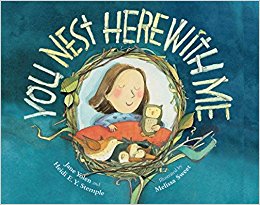


What makes each of these books, written after each author had the same idea—to write about nests—completely unique?
The magic is in taking that idea and making it your own. What perspective you take to look at the subject. Will you look at the birds (or other nest builders) from an outside observer’s point of view? Or from the bird’s? What voice will you use to tell your story? Will it be poetic? Scientific? A combination of the two? Will you choose, and make the most of, a literary device? Will you rhyme? Use alliteration or pack it with similes? Be silly or serious.
Go further: Look to the history or nature of the story to inform your story voice.
In LIGHTS, CAMERA, ALICE (by Mara Rockliff, illustrated by Simona Ciraolo) the story is about a woman in the film industry and parts of the story are told in old fashion (silent film) movie placards. That sets the book apart from any other book I’ve seen. Is your books about a mathematician? Can you integrate numbers into your story?
Does your protagonist have a catch phrase (look at I DISSENT by Debbie Levy, illustrated by Elizabeth Baddeley).
Carole Boston Weatherford uses rhythmic words to tell the story of John Coltrane in BEFORE JOHN WAS A JAZZ GIANT (illustrated by Sean Qualls) which makes the reader really feel the music that informed every aspect of Coltrane’s life.
What if you have a ridiculous idea? My book EEK YOU REEK (co-authored by Jane Yolen and illustrated by Eugenia Nobati) is about stinky animals. We chose humorous poems to be the vehicle to drive this subject. But, there is lots of nonfiction packed in those rhymes—even the really short ones:
The Shore Earwig (A Haiku)
Eat me. I dare you.
I’m a nasty stink bomb—POW!
Not so tasty now.
One more thing to think about—where it gets even more interesting—if you have a nonfiction idea, there is no rule saying you need to write a nonfiction book. Take, for example, the Audubon Christmas Bird Count. My book COUNTING BIRDS (illustrated by Clover Robin) is the nonfiction account of its history. Since it published, two other books about the same subject, though in a fictional way, have come out (FINDING A DOVE FOR GRAMPS, Amstutz/Di Gravino, and BIRD COUNT, Richmand/Coleman) and each has a new way to look at the same subject. Far from competing, these books work together for the bird-loving child.
So, don’t be afraid. Feel free to take a nonfiction idea and move away from it. Write something completely fictional or even fantastical. That nonfiction idea is your seed—the tree you grow from it is your choice.
 Heidi didn’t want to be a writer when she grew up. In fact, after she graduated from college, she became a probation officer in Florida. It wasn’t until she was 28 years old that she gave in and joined the family business, publishing her first short story in a book called Famous Writers and Their Kids Write Spooky Stories. The famous writer was her mom, author Jane Yolen. Since then, she has published more than 20 books including You Nest Here With Me, Not All Princesses Dress In Pink, and 2 Fairy Tale Feasts cookbooks, as well as numerous short stories and poems, mostly for children.
Heidi didn’t want to be a writer when she grew up. In fact, after she graduated from college, she became a probation officer in Florida. It wasn’t until she was 28 years old that she gave in and joined the family business, publishing her first short story in a book called Famous Writers and Their Kids Write Spooky Stories. The famous writer was her mom, author Jane Yolen. Since then, she has published more than 20 books including You Nest Here With Me, Not All Princesses Dress In Pink, and 2 Fairy Tale Feasts cookbooks, as well as numerous short stories and poems, mostly for children.
Heidi lives on an old tobacco farm in western Massachusetts where she writes, reads, cooks, sews, and once a year, calls and counts owls for the Audubon Christmas Bird Count.
Her website is HeidiEYStemple.com and she’s on Twitter @heidieys.

Heidi is giving away a copy of EEK YOU REEK when it’s released.
Leave one comment below to enter.
You’re eligible to win if you’re a registered Storystorm participant and you have commented once below.
Good luck!
Get ready for a new classic flying into bookstores next week: A KITE FOR MOON.

Late last year I had the pleasure of hearing Jane Yolen and Heidi E.Y. Stemple speak about the genesis of KITE and the long, winding journey it took. I’ll let Jane and Heidi take it from here…
Heidi: My mother and I have written about 22 books together and every one has it’s own process. KITE FOR MOON began in a completely different way.
Jane: Initially, it was my picture book. A combination of remembering the moon walk (Heidi was only about 2 and a half at the time, which we watched on our very small TV) and the fact that all through my growing up, my father was a kite flier. In fact he was the International Kite Flying Champion and president of the of the International Kite Fliers Assn. My card said, “May design own costume.”
Both my agent and I liked the manuscript, and so she sent it off. It kept getting rejected.
Heidi: Eventually, everyone gave up on that manuscript and it wound up collecting dust in a drawer. At some point, at least a couple years later (but, likely close to 5) I was asked to find it and send it on to an agent friend of ours who was looking for a project for one of his illustrators. But, before I sent it, I read it. It was not good. It was too sentimental and too long—too wordy, wordy, wordy. I’m pretty bossy, so I told her. And asked if I could take a whack at it.
The bones were good. But, it promised an ending it didn’t deliver. It needed serious pruning and a ton of focus. So I did that.
And sent it back to JY. (Yes, that’s how Heidi refers to her mom.)
Jane: I saw immediately that while Heidi had seen this as an editing job, and while she kept a great deal of my prose, what she added made it her book as well. And I insisted that her name be on the manuscript as well. There was a bit more back-and-forthing till we were both satisfied. Then the book went out with both our names attached. And lo! Zonderkidz (an arm of Harper Collins) bought it. And they started looking for an artist.
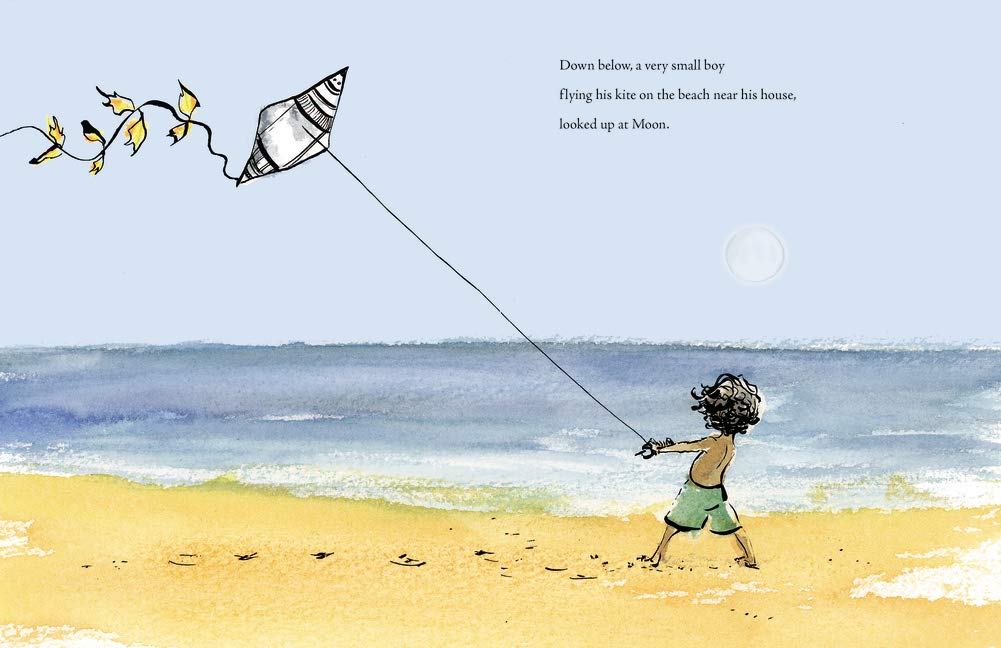
Heidi: We were sitting at a conference listening to lectures when Matt Phelan got up to speak. His art was being shown and, there was a piece he had with kids in a classroom and my head exploded. THAT was our kid! I poked JY in the side (she didn’t appreciate that) and whispered “Kite! Kite!”
Once I explained what I meant, we both went to work on Zonderkidz to approach Matt to illustrate. He said yes. The only thing we changed after that was the last page originally said ‘listened’ and we changed it to “watched” based on Matt’s amazing last page. I don’t want to give anything away, but when I read the last 2 pages, I still get choked up.
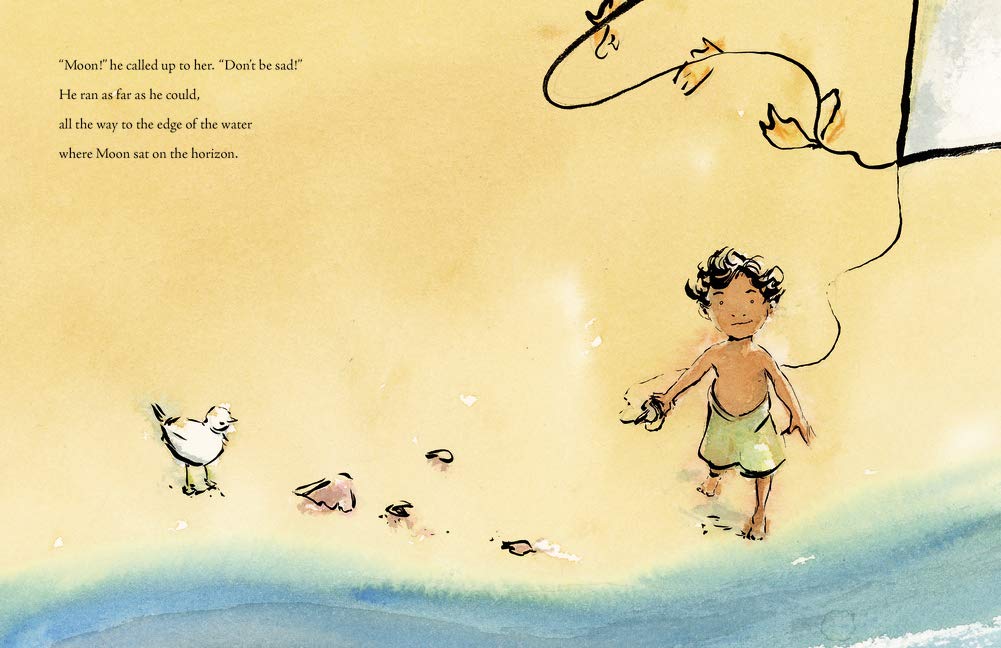
Jane: We’ve read the book to a number of audiences so far, mostly adults, mostly writers, and when we get to the last two pages, everyone chokes up or gasps. I am not sure that was what we were going for. But my husband and I had given that same sort of gasp when Neil Armstrong walked down the ladder and stepped on the moon. I hope all our readers, young and old, feel the moment. Though this is not the story of Armstrong and Buzz Aldrin first on the moon, it is the story of something monumental about how one small child becomes an adult who does something truly out of this world.
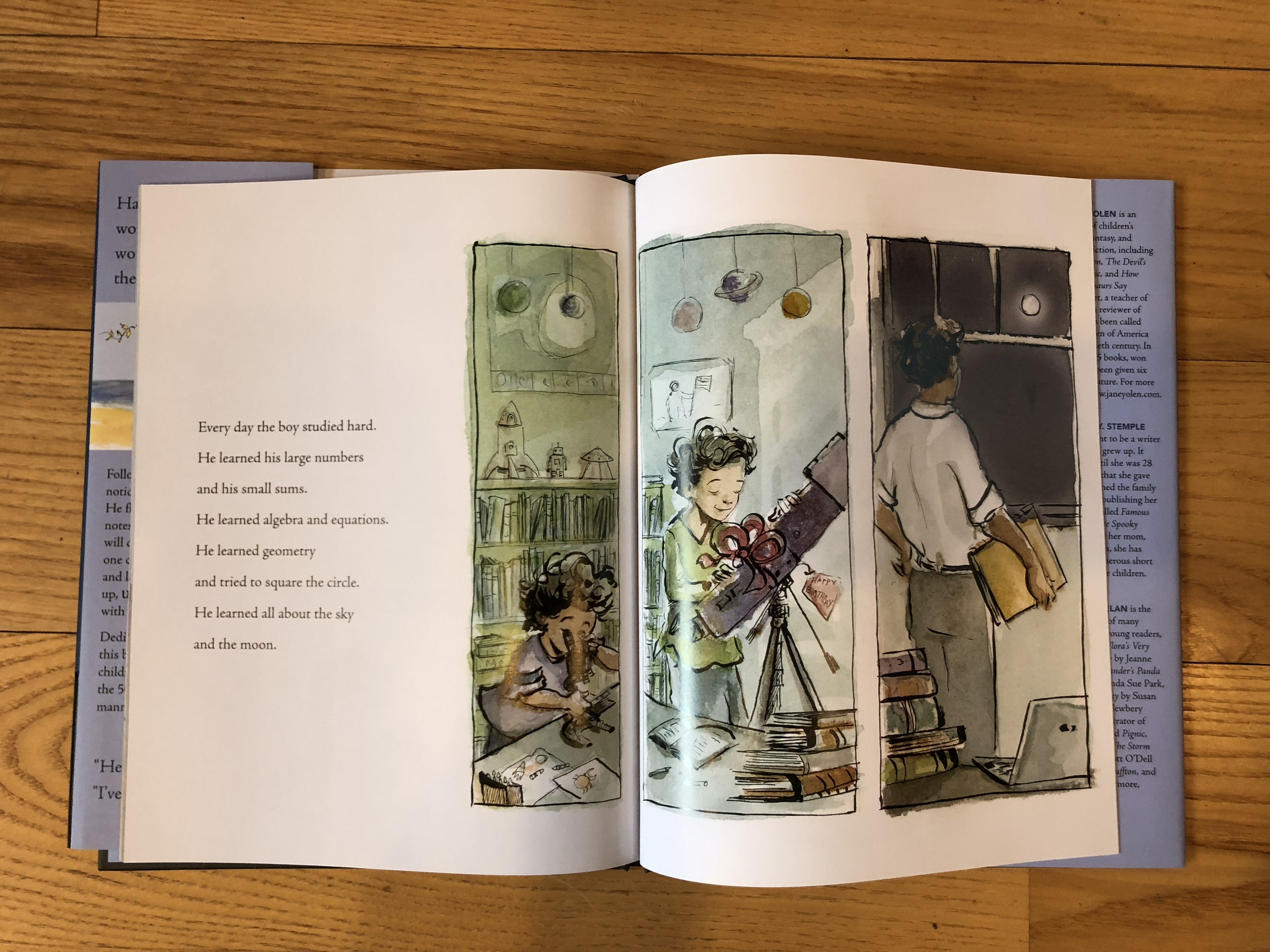
I listened to Jane and Heidi read the book, and I gasped, too.
If you want to gasp at your own copy signed by this amazing mother-daughter duo, please leave a comment below.
A winner will be randomly selected in a couple of weeks!
Good luck!
I, like every author on the face of the earth, am always asked where I get my ideas. We all, pretty much, have the same answer. Ideas come from everywhere. It sounds too pat and too vague. But, frankly, it’s the truth. Ideas do come from everywhere.
I’m always surprised when writers say they are worried they’ll never have another idea. How is that possible when they are under every rock, behind every door, in every café… And, the ideas I find are not floating around only in my orbit, they are in yours, too. What’s magical about ideas is that when two people see the same thing, they can spin that same experience into two (or three, or seven) wildly different stories. My idea may be a linear narrative nonfiction picture book and yours may be a fantastical YA romp in fairyland—both sparked from the same word or sight or situation.
An editor saying she was tired of pink princess books sparked the idea for a book about princesses doing active not-particularly-princess-y things. Spotting an enormous young moose in my backyard set me off on a year-long quest to find a plot for my moose character named E. Norm Moose. An online conversation about the publishing business led me to say, “I never count my chickens…” and I immediately thought of a farm-yard counting book. Taking part in a citizen science project for many years led me to a manuscript about its history. I was recently moved by a piece of art created by a friend, to write a story to flesh it out because I needed to know more about the characters. Some of these ideas are now books, some are manuscripts, and some may never get past the idea phase. But, that’s the reason to have more ideas than you think you could use in one lifetime. Ideas are never wasted. You may come back to an idea years from now, or cannibalize it later to fit into a story you have not yet written. Often, an idea I think will be an entire story is just a character, or a small scene in a larger story. Sometimes, the initial idea doesn’t work but is the gateway to an even better story. No idea is worthless. Keep every single one.
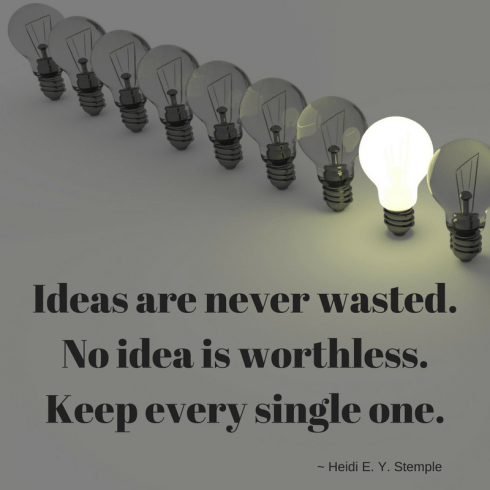
So, what is my advice for Storystorm? Open your eyes and ears. Pay attention to the world around you—live in it, not just in front of your computer screen. Eavesdrop on conversations. Let your mind wander. Once you are open to finding ideas, you’ll be surprised how many will appear. The hard part comes after, of course. Crafting a strong story with the perfect voice and creative arc, that is unique and authentic, and that an editor will fall deeply in love with and be able to convince the pub committee that it is sellable, well, that’s another post all together. That citizen science book? It took me 4 years to figure out how I wanted to tell it. NOT ALL PRINCESSES DRESS IS PINK started out about clothing and wound up about more active princess stuff. I’m still working on the moose story. But, all those stories, and every story—every book— begins with an idea. What are you waiting for? Go out and find them.
Heidi didn’t want to be a writer when she grew up. In fact, after she graduated from college, she became a probation officer in Florida. It wasn’t until she was 28 years old that she gave in and joined the family business, publishing her first short story in a book called Famous Writers and Their Kids Write Spooky Stories. The famous writer was her mom, author Jane Yolen. Since then, she has published more than 20 books including You Nest Here With Me, Not All Princesses Dress In Pink, and 2 Fairy Tale Feasts cookbooks, as well as numerous short stories and poems, mostly for children.
Heidi lives on an old tobacco farm in western Massachusetts where she writes, reads, cooks, sews, and once a year, calls and counts owls for the Audubon Christmas Bird Count.
Her website is HeidiEYStemple.com and she’s on Twitter @heidieys.

Heidi is giving away a signed copy of YOU NEST HERE WITH ME.
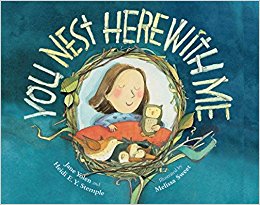
Leave ONE COMMENT on this blog post to enter. You are eligible to win if you are a registered Storystorm participant and you have commented once below. Prizes will be given away at the conclusion of the event.
Good luck!


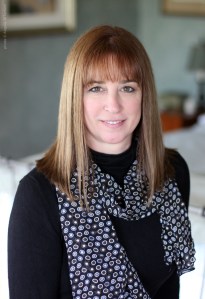 by
by 












